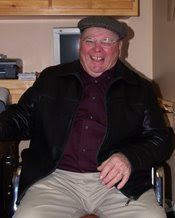When you want to learn about flooring there is no better way than to remove a floor that lasted half a century. For a floor to stay down and last that long they must have done something right. --and this was the flooring that was only 1/2" thick that was sold in the early seventies and installed in millions of floors in North America. This kind of floor could only be refinished a couple of times before needing to be stripped out and often only lasted a decade or two.
We had opportunity to witness a job first hand near Barrie Ontario where the old hardwood was being removed after nearly 50 years of service.
The first thing we noticed was that they had installed tar paper, like many flooring installers do, however, they also had a layer of building paper beneath the tarpaper. It wasn't beneath the entire floor--just the area that remained tight and squeak free. It looked like part of the floor was done at a different time, because all they had beneath that portion was building paper. That whole section of the floor was loose and noisy under foot traffic.
Here is the new floor acclimating to the moisture levels in it's new home. This normally takes a couple of weeks to happen. This is random width white pine flooring from Colling-Wood Flooring. It is dried to 6% and will shrink and expand less because of that fact.
By Lawrence Winterburn
We had opportunity to witness a job first hand near Barrie Ontario where the old hardwood was being removed after nearly 50 years of service.
The first thing we noticed was that they had installed tar paper, like many flooring installers do, however, they also had a layer of building paper beneath the tarpaper. It wasn't beneath the entire floor--just the area that remained tight and squeak free. It looked like part of the floor was done at a different time, because all they had beneath that portion was building paper. That whole section of the floor was loose and noisy under foot traffic.
The second thing we noticed was that there was lots of damage due to a leaky roof, and a patio/foundation issue that has caused moisture to enter the floor system yearly during spring thaw. It was coming in through the dining room and also at the patio door, so these are things that need to be addressed before the new floor gets installed.
Between the two areas of floor, there was also a dramatic difference in the number of nails used. The tight section used roughly 2x the number of fasteners as the one that went loose. Whether there is much actual difference in performance or not, remains debatable--but in this case, in the days of pneumatic fasteners it is a fairly easy thing to install a few extra nails to help the floor last longer.
Here is the new floor acclimating to the moisture levels in it's new home. This normally takes a couple of weeks to happen. This is random width white pine flooring from Colling-Wood Flooring. It is dried to 6% and will shrink and expand less because of that fact.
By Lawrence Winterburn
Visit us here: http://www.colling-woodflooring.com/
LIKE us on Facebook
e-mail Lisa or Merv - info@colling-woodflooring.co







